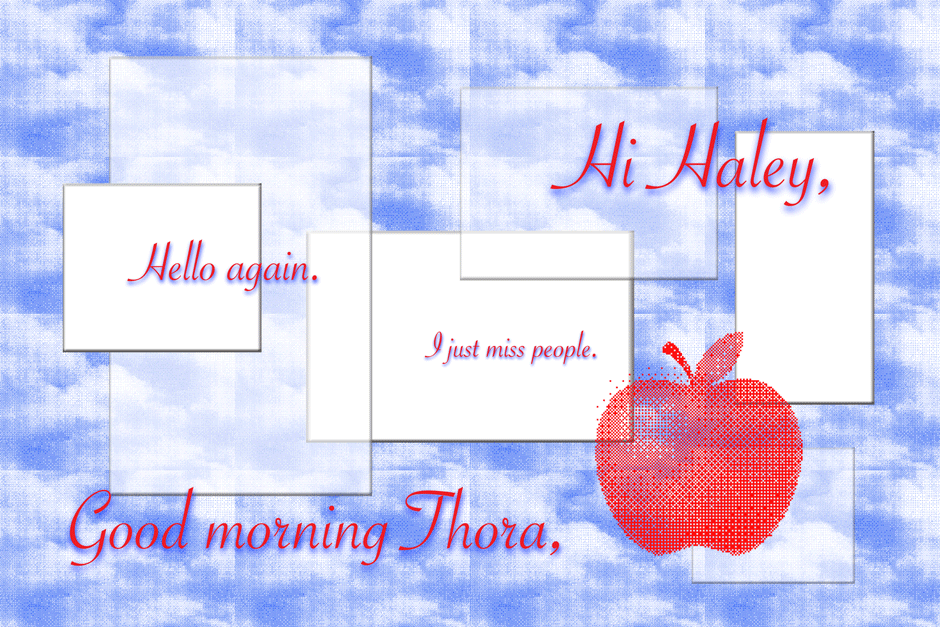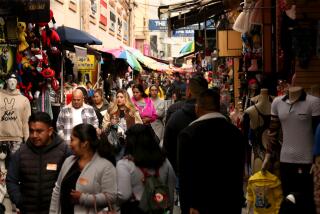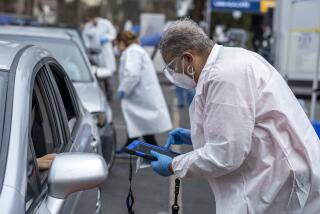Will New York rebound from the coronavirus pandemic?
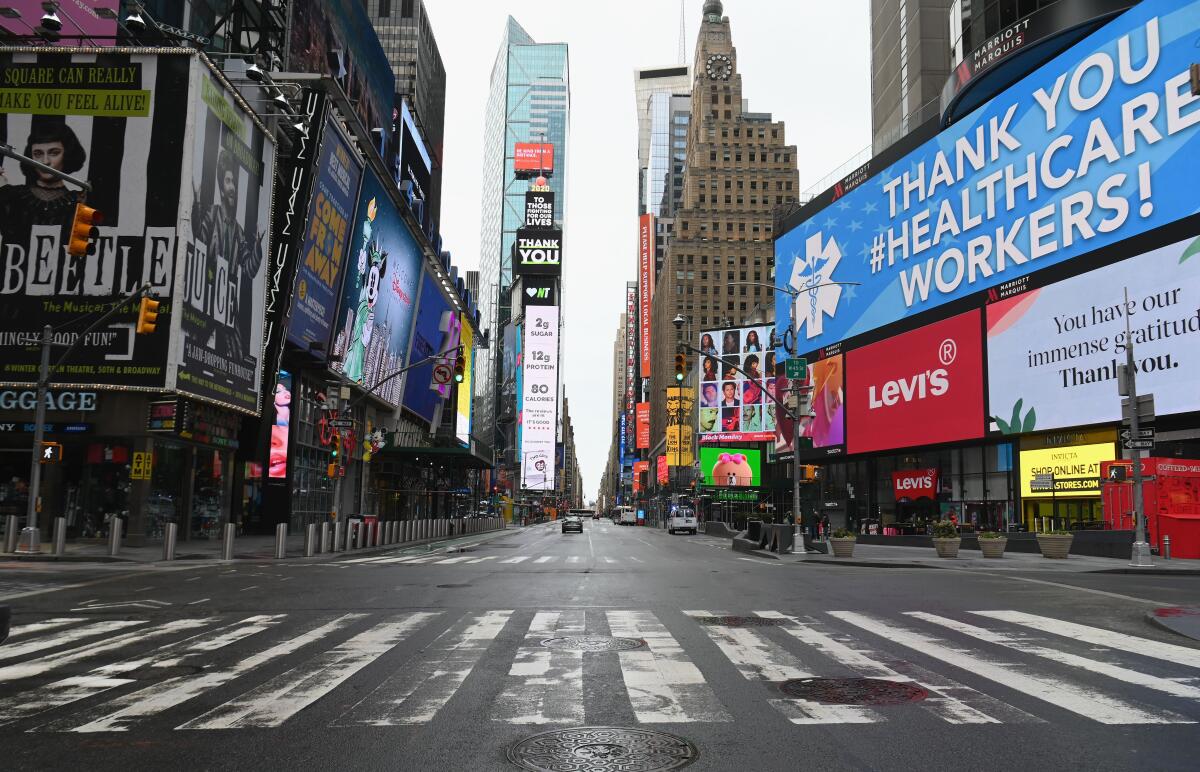
- Share via
NEW YORK — The flags at Rockefeller Center fly over a desolate concrete canyon. Photojournalists with long-lens cameras wander through Times Square to capture the solitude on one of the world’s busiest thoroughfares. White tents have been erected on the northern section of Central Park to accommodate the overflow of patients from Mount Sinai Hospital — a grim tableau evoking a previous century.
As the national death toll of more than 6,500 from the pandemic doubles the number of fatalities from the Sept. 11, 2001, terrorist attacks, New York has been transformed, and new habits formed. Many of the 4 million people who come to work in Manhattan are now staying connected with their jobs remotely. The restaurants and cafes that remain open have become takeout stops as they struggle to stay afloat. Public transportation has seen as much as an 80% drop in passengers.
After months of devastating loss and unfathomable fear following 9-11, the nation’s most populous city proved its resilience, rebounding more prosperous than ever. Experts believe the city will endure significant pain before experiencing that kind of comeback, given the pandemic’s death toll (more than 1,500 as of Thursday evening) and catastrophic economic losses — pegged at $5 billion by one financial watchdog group. At the very least, months, if not years, of uncertainty lie ahead.
“I think people were afraid after 9-11, but they weren’t afraid to go out and eat,” said Melissa Fleischut, president and chief executive of the New York State Restaurant Assn. “As long as the pandemic continues to go on, I think the prospects for the majority of restaurants to come out on the other side is slimming. I think it is an altering event — a moment of change for the industry for sure.”
A recent survey by the National Restaurant Assn. showed that 5% of New York’s restaurants have closed due to the restrictions imposed to contain the pandemic. On March 20, all workers in nonessential businesses across New York state were ordered to stay home by Gov. Andrew Cuomo.
An additional 12% expected to close permanently in the next 30 days if the current situation did not improve. The growth of the restaurant business had already been slowing due to the state’s $15-an-hour minimum wage.
“We had already seen life get more challenging for the restaurant owner and operator throughout the state,” Fleischut said. “They were trying to manage with labor costs that have increased dramatically. Rent was always concerned. Profit margins are slim, and they have no savings to speak of to get them through a catastrophic event like this.”
Nearly half of restaurants in New York are closed even with the provision that they can serve food and alcoholic beverages for takeout and delivery. Dante, a 105-year-old café on MacDougal Street in Greenwich Village, has its bartenders preparing their specialty cocktails to go, offering them in glass containers that are lined up on tables that would otherwise have seated customers.
“We’re bottling these,” Jessica Friedman, a server at Dante, said. “It’s keeping us all employed.”
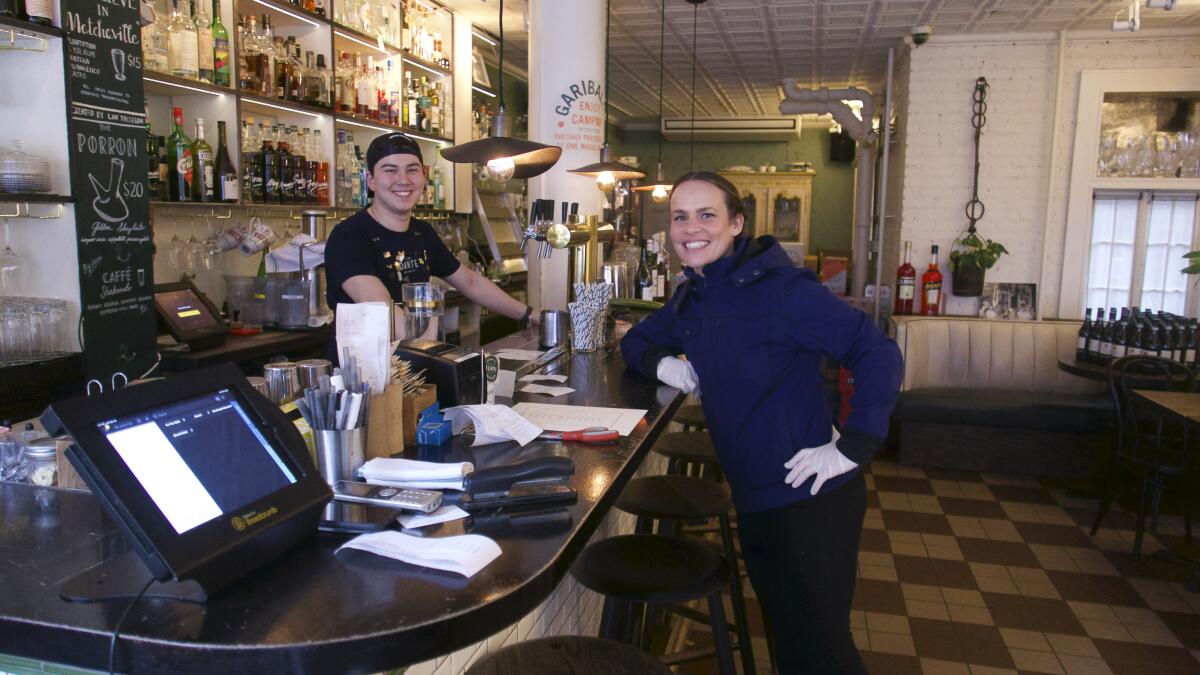
Fleishcut said one restaurant proprietor had remodeled so he could sell meal kits for customers to heat and serve at home. She expects an acceleration in the number of restaurants converting to a “fast casual” service, especially if social distancing continues after the pandemic abates.
Caterers and event planners are also anxious over how long it will take for the public to feel comfortable going back to business conferences, trade shows, conventions, social galas, festivals and award presentations, which brings an influx of billions of dollars to New York. Midtown’s Jacob K. Javits Convention Center, normally host to trade shows like Book Expo America, has been turned into a field hospital.
David Adler, founder and chief executive BizBash, a New York firm that advises the event business, said he has been on calls with companies trying to determine when normalcy, whatever that is, will return and how to navigate the economic shutdown.
“It’s all about how you not cancel events but postpone them,” Adler said. “The problem is nobody knows when they can postpone till. There is all of this unknown in the markets. A lot of people are living off deposits for future events.”
Cash flow is an issue, Adler said, and many operators serving the event business will eventually fold or be forced to sell while other entrepreneurs step in.
“There will be a lot of carnage,” he said.
Long term, Adler does not believe the meeting and event business will experience a negative impact from the growth in web conferencing services — such as Zoom and Webex — that businesses are being forced to use.
There will be a pent-up appetite for human connection once the pandemic passes, Adler said. But it will take work to bring the business back. In the years following 9-11, he was part of a coalition that held numerous events at Gracie Mansion — the official residence of the mayor — and lighting displays at the Empire State Building to signal to businesses that the city was ready to return as a convention and meeting destination.
“New Yorkers are very vibrant in that they worked hard in getting people come back,” Adler said. “It doesn’t happen by accident.”
But the number of New York-area residents forced to work at home while their offices are shut down is likely to become a permanent situation for some of them, according to Sam Schwartz, who heads a transportation planning and engineering firm in New York.
“I’m realizing, ‘Hey, do I really need to take that extra floor?’ ” he said. “A lot of people were able to get a lot done remotely, including me. You will see some employers offer an alternative to work at home.”
Schwartz puts the current percentage of New York employees working remotely at 2% to 3% and sees it doubling as a result of the pandemic. But he doesn’t see it making commuting any less crowded.
Subway ridership fell off dramatically in the months after 9-11 as people feared another attack. Ridership bounced back after a year, and in the following decade, the city saw record numbers of passengers.
Schwartz noted that the drop in the number of cars crossing the Hudson River into Manhattan has dropped about 25% to 30% in March, far less than the steep declines in trains, buses and ferries making the same trip. But he does not believe prolonged fear of COVID-19 will put more commuters back in their cars. Schwartz said that would be unsustainable and ultimately paralyze the city; moreover, New York is moving to install a “congestion charge” on driving in the most heavily trafficked parts of Manhattan, starting next year.
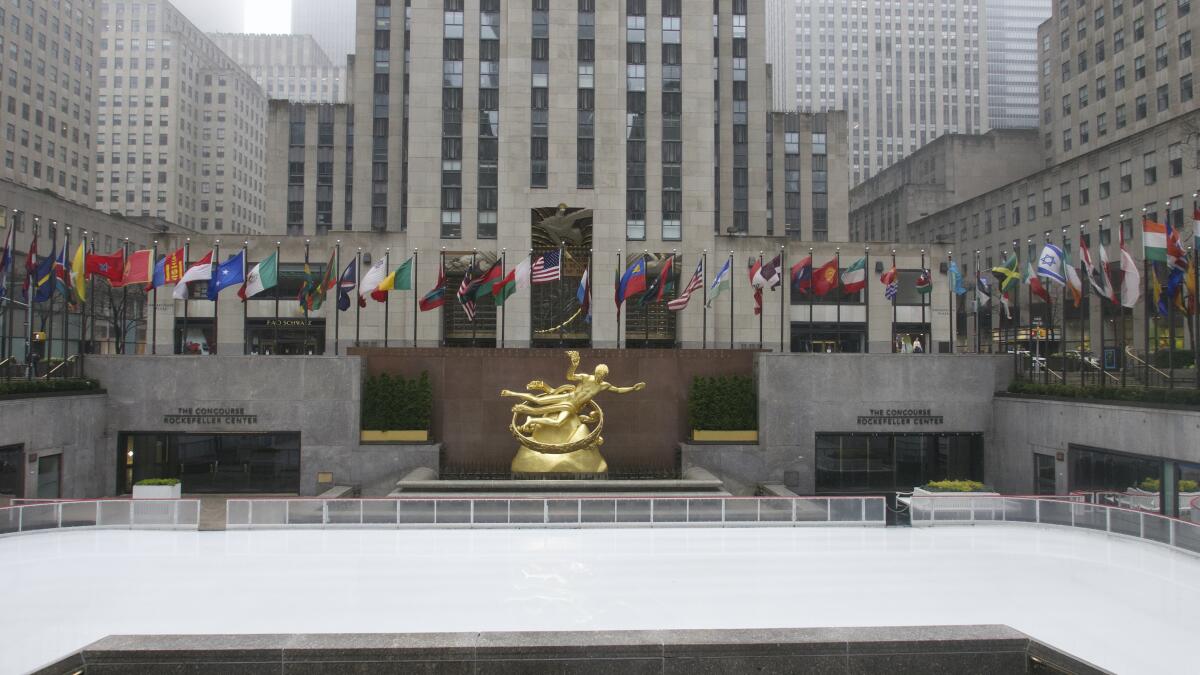
New York has endured numerous catastrophes — the sinking of the steamship General Slocum in 1904, the Triangle Shirtwaist Factory fire of 1911, the near-bankruptcy in the mid-1970s, numerous plane crashes and even terrorist attacks — and always bounced back.
“There are a lot of people traveling today who barely know 9-11 — they were children,” Schwartz noted. “Now they make up a big chunk of the commuting population.”
More to Read
Sign up for Essential California
The most important California stories and recommendations in your inbox every morning.
You may occasionally receive promotional content from the Los Angeles Times.
